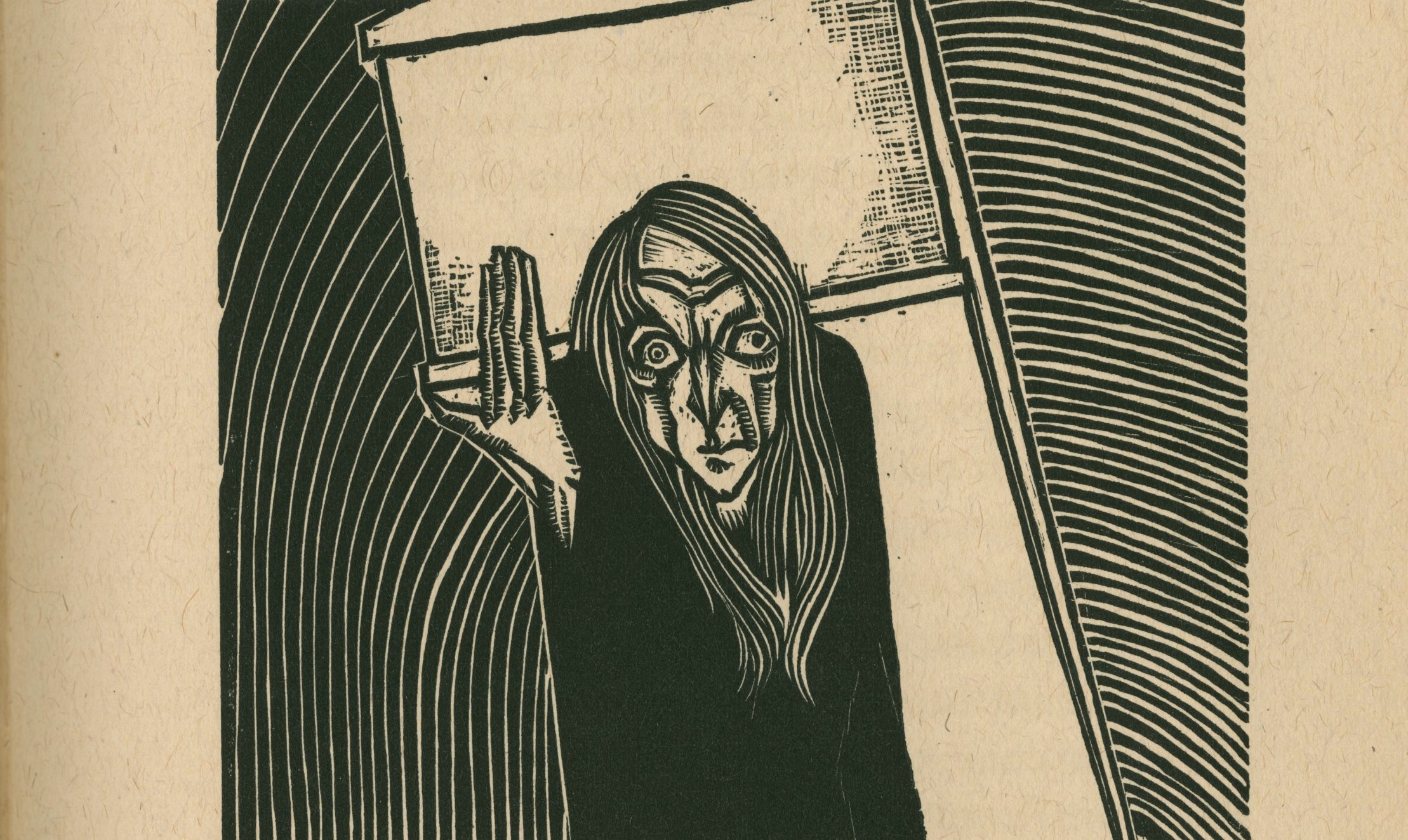Introduction
Ever read a strange book or watch a scary film, and feel the hairs on your arms stand on end? Ever get the “chills” encountering a creepy story, or have a hard-to-pin-down, icky feeling while standing in a cemetery or house that feels “haunted”? Have you ever had a funny feeling, but can’t quite put your finger on what it is that’s actually bothering you?
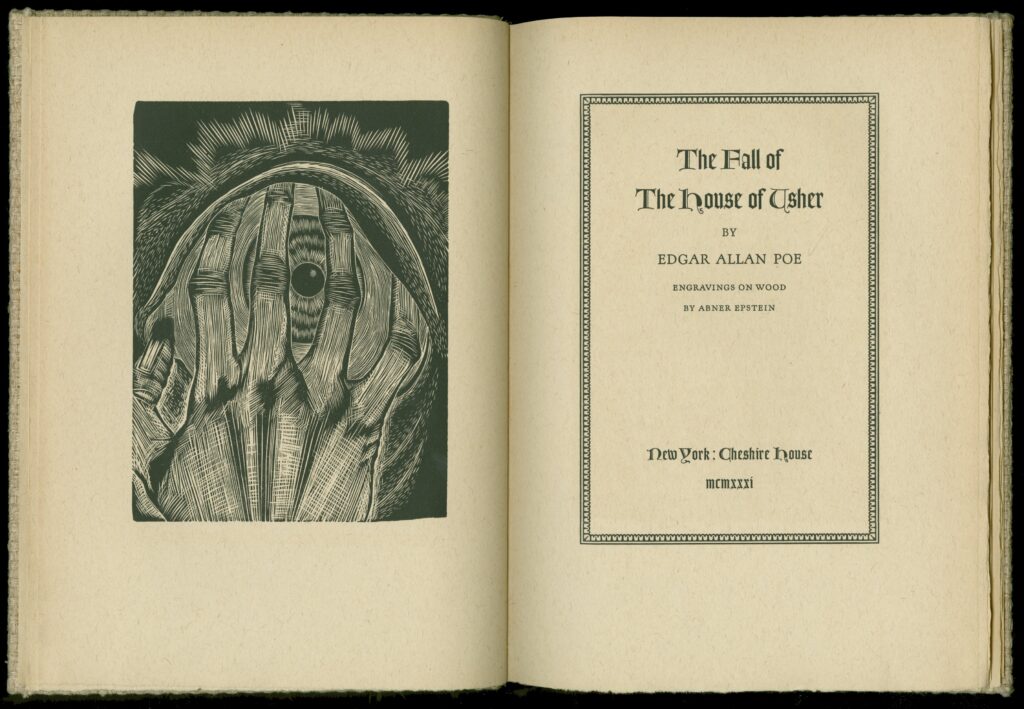
Those feelings are intrinsic to the experience of reading Gothic literature. Many authors of Gothic literature capitalized on those creepy feelings in order to usher in a new literary experience for readers. Broadly conceived, the Gothic is a sub-category of the Romantic genre including poetry, short stories, or novels designed to thrill readers by providing mystery and blood-curdling accounts of villainy, murder, and the supernatural. Common characteristics of classic Gothic literature include: wild and desolate landscapes; ancient buildings (ruined mansions, monasteries, etc.); castles and dungeons; secret doors and winding stairways; and apparitions and phantoms (“Literary Terms and Definitions”). J. A. Cuddon aptly describes one important quality of the Gothic: “an atmosphere of brooding gloom” (Dictionary of Literary Terms, 381-82). While many Gothic texts include seemingly impossible scenarios and otherworldly events, the biggest, and most effective, thrill of the Gothic is how it taps into the essential terrors of human experience, hidden fears and desires, and the hauntings of the historical past. Narratives about crumbling castles and damsels in distress may not be in style anymore, but many characteristics of the Gothic prevail today in popular culture—ranging from the Harry Potter series, to noir films, to the Twilight franchise.
For the purposes of introducing and studying the Gothic in the classroom, however, one important characteristic is the particular role the genre plays in American literature, history, and culture. The American Gothic can be approached as a cultural lens, through which we can examine the social, political, and aesthetic investments of a particular historical period.
Gothic literature has a long, complex, and multi-layered history. In many ways, the Gothic genre invites many larger questions about the literary field, including—but not limited to—the ideas of how and when literary “canons” are formed, by whom, and under what conditions. As with any genre, the frameworks of the Gothic can be studied, as well as disrupted. For instance, how would our perspective on the American Gothic change in the context of transatlantic (Henry James), postcolonial (Jean Rhys), or North American (Angela Carter, Margaret Atwood) perspectives? While this essay focuses on writers often taught in American literature classrooms, it is necessary to recognize—and even challenge—the categories that have organized how we read and teach literature in the classroom.
Finally, this collection approaches the American Gothic literary text is a cultural and social object; in other words, not only does it convey important material in the writing itself, as it pertains to conventions related to the language (plot, underlying symbolism and messages, staging a critique, calling attention to a social problem, etc.). As a physical object, an American Gothic text also performs important cultural work. Through observing and analyzing its paratextual qualities (qualities of the text other than the written language, including its physical appearance, circumstances of publication, book sales, circulation, etc.), we can encounter, first-hand, the ways in which an American Gothic text functions as a historical and cultural artifact.
This Digital Collections in the Classroom essay gives a taste of the vast array of items found in The Newberry Library’s collection pertaining to the foundations of Gothic literature, as well as its particular flavor in American literary culture.
Essential Questions:
- What are some characteristics of the Gothic genre? The American Gothic genre?
- What are the advantages and disadvantages of working within a literary genre?
- How does the American Gothic genre reflect historical, political, and cultural concerns of the time?
- Was there a time in your life when you felt that “creepy” feeling often associated with Gothic themes? Write a short story in response to that experience.
The Foundations of Gothic Literature
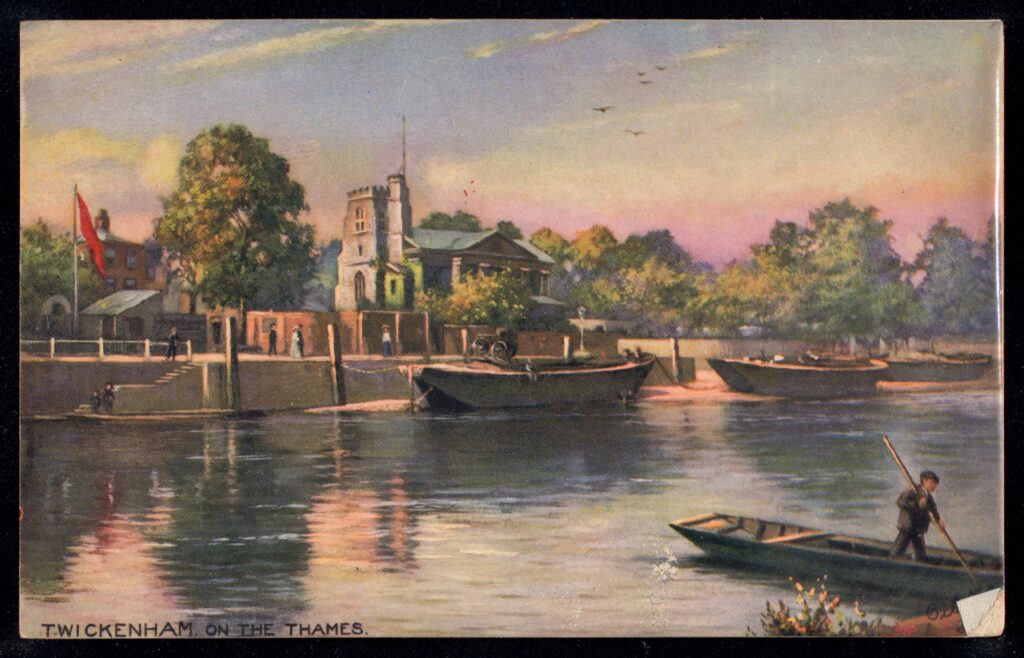
In order to study the American Gothic, it is important to understand its original foundations, found in the eighteenth century. While “spooky” things have certainly always existed, those who study the Gothic literary tradition identify its beginnings with Horace Walpole, a British art historian, writer, and politician. In 1749, motivated by his own fascination with medieval history and artifacts, Walpole built Strawberry Hill House, a Gothic villa in Twickenham, a neighborhood in southwest London. This series of turreted, castle-like buildings departed from the classical architecture popular in the 18th century, and helped bring Gothic revival architecture to public’s imagination. It also became closely connected to the Gothic literary movement.
His aesthetic interest filtered into his life as an author, as well. Walpole wrote the book The Castle of Otranto (under the pseudonym “William Marshal”) while a member of British Parliament for the Whig Party in 1764. It is deemed among scholars to be the first supernatural novel, as well as a mixture of old and new themes—with “real people” in ordinary life experiencing otherworldly, extraordinary situations that are difficult to rationalize and explain.
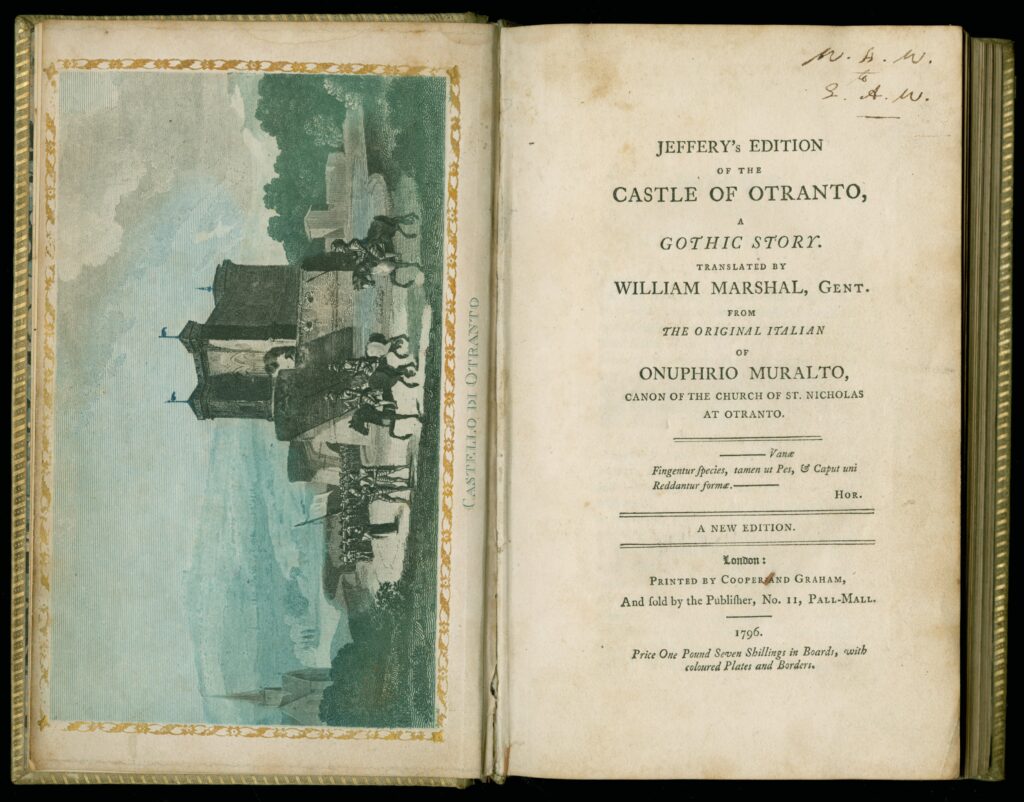
In the first edition, Walpole claimed that the story was a translation of an original Italian manuscript from 1529 by “Onuphrio Muralto.” It was only until the publication of the second edition of the book that he admitted himself as the author. One possible reason for not admitting full authorship of the story would be to distance himself from sensational fiction, which was a controversial literary genre in the eighteenth century. The idea of discovering a manuscript would, therefore, makes the circumstances surrounding the story seem more historical than fantastical. (Undoubtedly, as an art historian, Walpole had the theme of history at the front of his mind.) However, another motivation for Walpole’s denial could relate to the idea of deflecting authorial responsibility for the story, as he claims himself a mere “translator” of another writer’s narrative. Additionally, the idea of a 16th-century manuscript heightens the exotic narrative of Otranto, staging it in an otherworldly place (Italy) as well as another time, “long ago.” These otherworldly characteristics contribute to the effect of the Gothic as displacing the reader from “normal life” into another setting, in which the supernatural reigns.

The story of The Castle of Otranto is a long and convoluted one. It focuses on a man named Manfred, whose son, Conrad, dies before his wedding to the princess Isabella. Anxious about continuing the family line, Manfred marries Isabella after divorcing his wife. As his plans become increasingly evil, the castle becomes haunted. Aside from centering on Manfred’s concern about continuing the family line, the story features many supernatural occurrences, portraits that come to life and walk around, trapdoors and secret passageways, and doors that open without warning.
Walpole’s novel was an immediate success, and inspired other authors to write their own Gothic stories, including Clara Reeve’s The Old English Baron (1778) and M.G. Lewis’s The Monk (1796).
Questions to Consider:
- What are some examples of the story line of The Castle of Otranto that combine the hard-to-explain with the real and explainable?
- What do you believe is the main reason Walpole credited his story to a fake manuscript writer from 1529? And why would he use a pseudonym instead of his real name? What may be some other underlying reasons for these decisions?
- Why is the emphasis on heritage, bloodlines, and ancestry such an important theme in the Gothic?
- Design your own Gothic estate, inspired by the castle in the frontispiece to The Castle of Otranto. What would you include, and why? Include a written “rationale” with your illustration.
The American Gothic
This section’s featured woodcut image depicts the famous scene in Edgar Allan Poe’s “The Fall of the House of Usher” (1839), during which Poe’s narrator and Roderick Usher carrys his sister, Madeline, into the family tomb. Abner Epstein’s woodcut, in a 20th-century edition of Poe’s story, depicts a stark aesthetic, with Roderick’s disheveled look—and maddening gaze—placed front and center. This pictorial representation of Poe’s story contrasts the flowery, fantastical illustration of Otranto in Horace’s frontispiece, pictured in the previous section. Instead of focusing on the romantic scenery and majestic buildings, this woodcut illustrates the downward spiral of one’s own psyche, symbolized further in the downward descent of the (we later learn, half-live) corpse into the tomb.
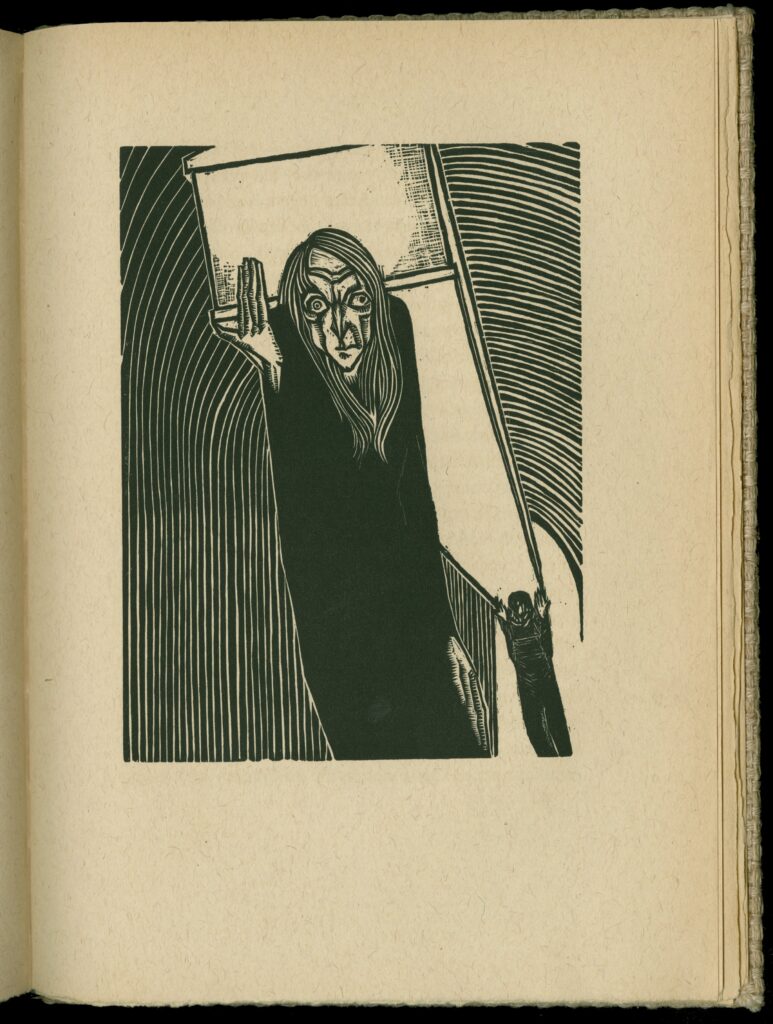
Because of their different time periods and artistic mediums, these two illustrations call attention to how the Gothic has evolved as a literary genre across the centuries. Certainly, we identify important influences of the eighteenth-century Gothic in American works; take, for instance, Edgar Allan Poe’s “The Cask of Amontillado,” which takes place in an unknown Italian city, in the catacombs during a raucous Carnival festival.
The American Gothic as a genre generally shifts away from the outward appearances of haunted landscapes and buildings, as well as outward signs of the supernatural, to the inward terrors of one’s own mind. The image below of the title page and illustration for The Cask of Amontillado is an apt symbol of Poe’s preoccupations as a storyteller—as well as his important influence on the Gothic genre in America.
Many American writers have been categorized as “Gothic” writers, including (but not limited to): Nathaniel Hawthorne, Herman Melville, Edgar Allan Poe, Emily Dickinson, Henry James, Ambrose Bierce, Stephen Crane, William Faulkner, Cormac McCarthy, Toni Morrison, Stephen King, and Joyce Carol Oates. These writers deploy elements of the Gothic to illustrate their social, political, and cultural concerns about what they observe around them.
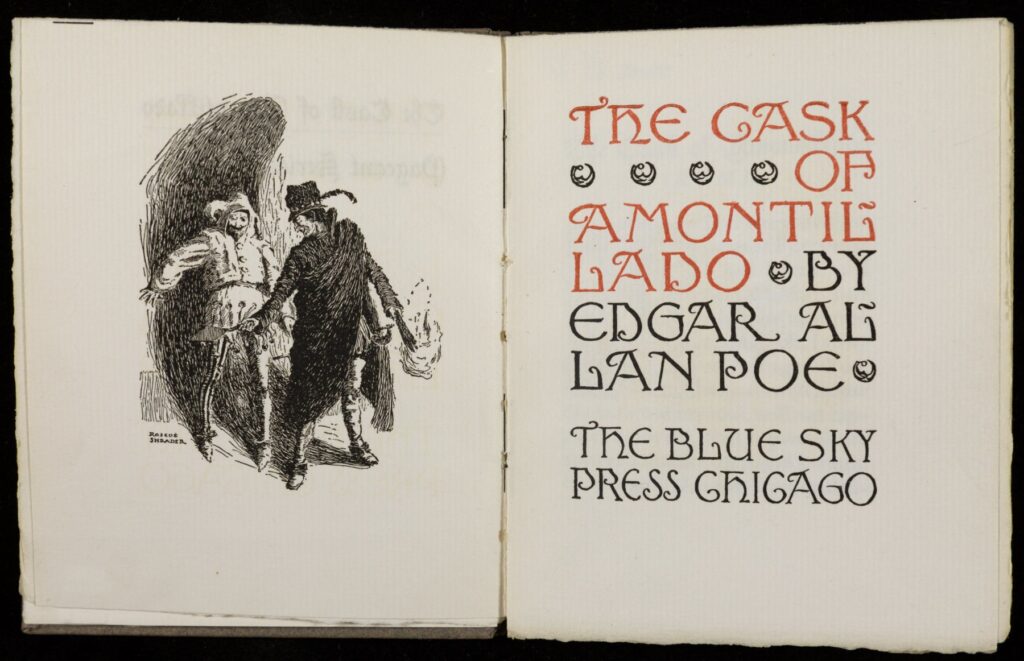
The American Gothic genre is at once vast and diverse, and unified by shared thematic concerns. Whereas earlier centuries emphasized the Gothic genre as a form of escapist literature, with a “long ago and far away” atmosphere, the American Gothic focuses on important elements of daily life that, when framed in a Gothic nature, brings a new light to social issues that may be at first too “ordinary” to notice. In his book American Gothic (2009), Charles Crow claims that this genre enabled “the imaginative expression of the fears and forbidden desires of Americans” (1). In comparison to earlier versions of the Gothic, which focused on ancestral bloodlines and decaying, centuries-old castles, the American Gothic digs deeper into the darker, often psychological underbelly of everyday life. Even in outwardly “extra-ordinary” plot lines (a drunken party during carnival season, like in Poe’s “The Cask of Amontillado,” for example), there lies an emphasis on one’s inner evils, drives, and secret desires. Poe, in particular, often utilizes a self-proclaimed “rational” narrator to illuminate his own inner demons and murderous drives (Crow).
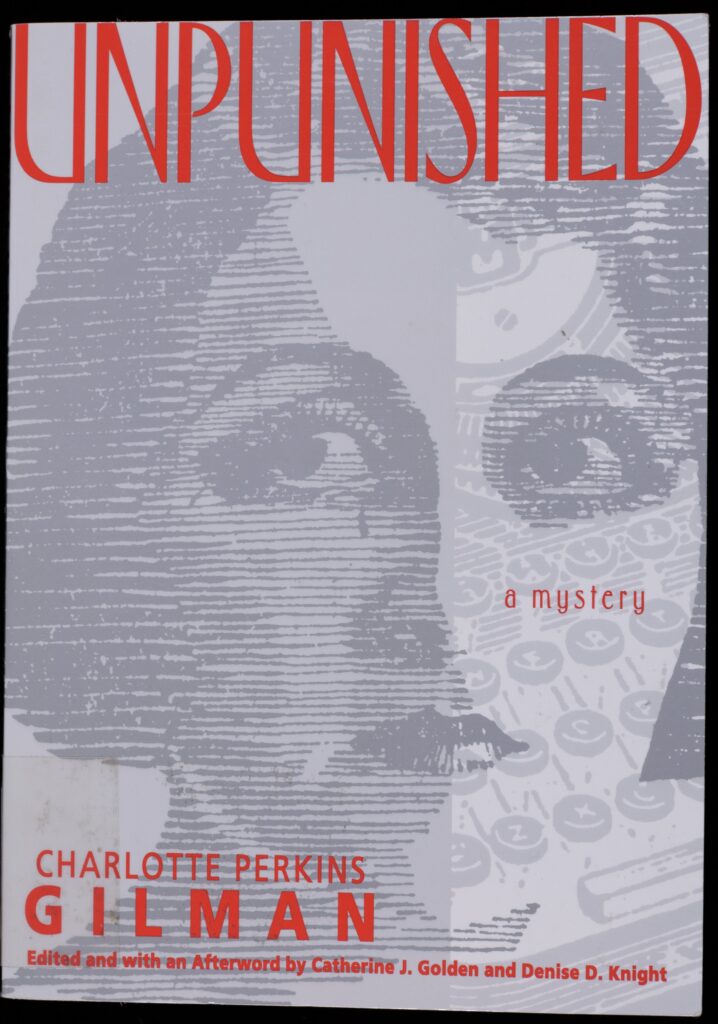
Examples of ordinary occurrences and events, framed with gothic qualities, include post-Reconstruction South and slavery (William Faulkner, “A Rose for Emily”), and women’s issues, including depression, childbirth, and the abuse by men in the medical profession (Charlotte Perkins Gilman, “The Yellow Wall-Paper”). The former, an example of the Southern Gothic sub-genre, rests on the tension between a dangerously false, nostalgic representation of American slavery with the economic, social, and physical realities of slavery and its aftermath in American history. The latter illustrates the feminist possibilities within what may originally seem a “damsel-in-distress” genre. Gilman’s loosely autobiographical story of a woman’s descent into madness while participating in the “rest cure” illuminates the conflict between one’s desires (especially to engage in creative expression, through writing) and the social constraints of marriage and motherhood. Additionally, “The Yellow Wall-Paper” has played a crucial role in scholarship that re-examines the American literary “canon” and makes conscious efforts to bring more women writers into the conversation. While less popular on class syllabi than “The Yellow Wall-Paper,” Gilman’s re-discovered manuscript, Unpunished: A Mystery (pictured here), engages with themes of the American Gothic discussed in this essay. This book was published in 1997 by The Feminist Press, a publisher that continues to play a crucial role in bringing many women writers back into academic studies.
Crow, responding to and building from Leslie Fiedler’s definition of the American Gothic in his seminal work Love and Death in the American Novel (1960), writes that “[the] American Gothic is no longer defined as a narrow tradition bound by certain props (ruined castles, usually in foreign lands, and imperiled maidens). It is now usually seen as a tradition of oppositional literature, presenting in disturbing, usually frightening ways, a skeptical, ambiguous view of human nature and of history. The Gothic exposes the repressed, what is hidden, unspoken, deliberately forgotten, in the lives of individuals and of cultures” (2).
Crow’s assessment of the American Gothic prioritizes how the way things appear on the surface can amplify the felt, unseen terrors that lie beneath an individual, community, or nation.
Questions to Consider:
- Compare and contrast the images from The Castle of Otranto and “The Fall of the House of Usher”. Aside from the ways they are discussed above, what are some other differences you notice in the representation of the Gothic? Similarities?
- What are some creative opportunities for the Gothic genre to change and evolve, within this new historical and geographical context of “America”?
- How does the inward turn to the psyche affect one’s interpretation of Gothic texts?
The American Gothic Wilderness
It would be impossible to catalog all of the important themes found in the American Gothic genre. Yet, one important way to identify what makes the American Gothic so unique is by identifying the role landscape plays in these narratives.
As previously discussed, the American Gothic takes on a more interior and psychological dimension to the earlier definitions of the Gothic. The openness, mystery, and wildness associated with the colonized American landscape provide a backdrop for exploring issues of cultural and national identities. Whereas the plot of the traditional Gothic story hinges on the physical environment’s architecture and spooky outward characteristics, the American Gothic uses the landscape to symbolize the beliefs, priorities, and anxieties of its characters and communities.
Contemporary scholars, educators, and students are right to call out the idea of the American landscape—as untouched, unoccupied territory—as a white colonizer’s fantasy, which has persisted in the American literary imagination. This fantasy demonized further the original inhabitants of North America, the Native Americans, and provided means of justification for the colonial settlers’ violent behaviors. One way we can study how the Gothic shifts away from the Old World context (like Walpole’s) to that of the New World is how the American landscape becomes utilized to these ends. There are no dilapidated Italian castles in which the plots unfold. The ghosts of one’s ancestral past are now replaced by cultural “others,” especially Native Americans. This brings to mind the idea that American Gothic narratives negotiate the anxiety of one’s lineage differently than Gothic stories across the pond; one common thread connecting much of early American Gothic writing is a proclaimed anxiety about the mysterious nature of the new republic’s lands, and its peoples.
One of the earliest writers of the American Gothic, Charles Brockden Brown (1771-1810), articulated the need to adjust a Gothic tale to America’s particular setting. He wrote in his preface to Edgar Huntly (1799), “Puerile superstition and exploded manners; Gothic castles and chimeras, are the materials usually employed for [‘engaging the sympathies’ of readers]. The incidents of Indian hostility, and the perils of the western wilderness, are far more suitable…” (Krause, qtd. in Crow, 25). Here Brockden Brown suggests that storytelling needs to shift to account for the specific contents of America—away from the “castles and chimeras” and towards the “perils of the western wilderness.” His problematic mention of “incidents of Indian hostility” positions the white colonizer as a potential victim of Native American terrors, but nevertheless depicts the role of the American wilderness as a sort of character in itself, rife with tales that entertain and entice readers.
Nathaniel Hawthorne’s short story “Young Goodman Brown” (first published anonymously in 1835, and later under his name in 1846) also contains these undertones of colonial anxiety about Native American inhabitants, while taking a slightly more spiritual angle. The eponymous protagonist goes on a mysterious errand in the forest that leads to his loss of faith in his community, including his wife, also named “Faith.” Here, Hawthorne deploys the American “wilderness” as a site for looking inward to one’s spirituality and that even the most pure and faithful of people may have a dark side.
In the context of the Charles Brockden Brown, Fiedler wrote on the author’s contribution to the gothic genre; however, one can apply his words to the larger idea of the American Gothic as a whole. For instance, Fielder wrote that Brockden Brown created “a tradition of dealing with the exaggerated and the grotesque, which impose themselves on us, not as they are verifiable in any external landscape or sociological observation of manners and men, but as they correspond in quality to our deepest fears and guilt as projected in our dreams or lived through in extreme situations” (142).
Roughly one hundred years later, Edgar Allan Poe picks up the important role of the landscape in the Gothic tradition. The narrator in “The Fall of the House of Usher” (1839) provides an important combination of “Old World” and “New World” ideas that came to define the American Gothic. He describes his arrival to the Usher estate, where his childhood friend, Roderick Usher, resides:
“I know not how it was—but, with the first glimpse of the building, a sense of insufferable gloom pervaded my spirit…I looked upon the scene before me—upon the mere house, and the simple landscape features of the domain—upon the bleak walls—upon the vacant eye-like windows—upon a few rank sedges—and upon a few white decayed trees—with an utter depression of soul which I can compare to no earthly sensation more properly than to the after-dream of the reveler upon opium—the bitter lapse into everyday life—the hideous dropping off of the veil. There was an iciness, a sinking, a sickening of the heart—an unredeemed dreariness of thought which no goading of the imagination could torture into aught of the sublime. What was it—I paused to think—what was it that so unnerved me in the contemplation of the House of Usher?”
As this passage demonstrates, Poe uses the physical characteristics of the Usher estate to illuminate the gloomy or “creepy” feelings experienced by the narrator. As the story progresses, the lush and exotic-looking estate grounds and the decaying Usher mansion serve to reflect the spiritual decay of the Usher family line. While not a traditional representation of the “wilderness” per se, Poe nevertheless shows the untamed—and often, terrifying—nature of the human soul.
Selection: Edgar Allen Poe, The Raven and Other Poems (1845).
Other American texts, like Toni Morrison’s Pulitzer Prize-winning novel Beloved (1987), works with the theme of the American landscape and wilderness to illuminate other social and political issues intrinsic to the American historical experience. Morrison’s uses the southern slave plantation to reveal the dark and violent history of US enslavement. Morrison, and others, continue the tradition of the American Gothic and imbue it with themes that call attention to this nation’s fraught historical past.
Questions to Consider:
- When placed alongside the earlier characteristics of the Gothic, which was associated with “Old World” traditions, how do the qualities of the American Gothic compare? Contrast?
- In the passage above from “The Fall of the House of Usher,” how does Poe stay loyal to earlier characteristics of the Gothic? How does he depart from them?
- Read Edgar Allan Poe’s “The Raven,” featured in this section. If one were to make a case for the American “wilderness” in this poem, what would it look like? How is it different than traditional approaches to Gothic landscapes? Further, how is it similar to–or different from–Poe’s description in “The Fall of the House of Usher”?
- What are some other narratives in American literature that you studied in which landscape plays an important role? In what ways do they engage with Gothic traditions?
The Gothic Text in American Culture
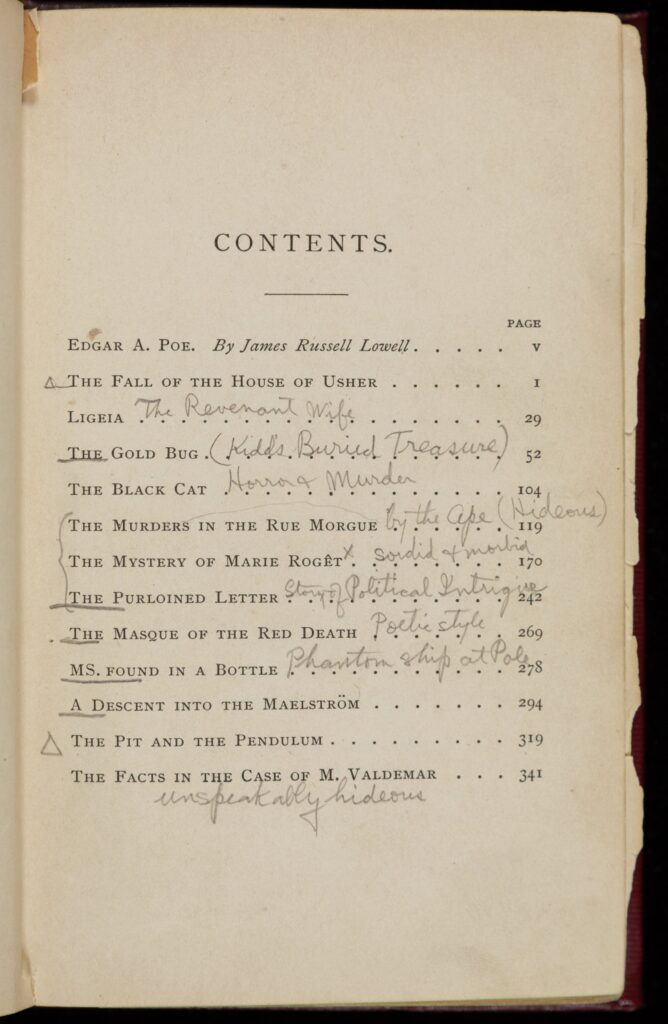
The Table of Contents from Poe’s “Prose Tales” shows an unidentified reader engaging with the stories in Poe’s collected Prose Tales. The various reactions, indicated by the writing in the margins (also called “marginalia”), indicates how this reader connected with these stories so powerfully that he or she wanted to scribble commentary inside of the book itself. This is not an unusual thing to see in nineteenth-century books; however, in the context of the American Gothic, it is important to remember that these stories are meant to engage, titillate, and terrify their readers.
Aside from some important shared formal characteristics, Gothic American literature can allow us to witness important cultural moments and debates in American history. Various texts held at the Newberry Library show us the ways in which these stories circulated and—as in the case of the image of the table of contents from Poe’s Prose Tales—were received by audiences.
As this collection has shown, the Gothic genre is quite vast. It is partly such a large genre because people have used elements of the Gothic to communicate other ideas about society, politics, gender, health and medicine, and history. The Gothic genre has been utilized by writers to communicate messages about their contemporary lifetimes that they believe are problematic, controversial, or worthy of social change.
The paratextual qualities (characteristics of a text that do not relate to written content) of sentimental writer Mary E. Wilkins [Freeman’s] The Wind in the Rose-Bush (1903) contain several stylistic flourishes that suggest a targeted female readership. The book cover, including a red rose and a faintly-drawn woman spirit, ascribes to traditional conceptions of femininity as aesthetically beautiful and delicate. Even the gold type of Wilkins’s title adds a bit of glamour to this collection of ghost stories, and one can imagine the edition looking very elegant sitting in a bookshelf in a personal library. The illustrations, by Peter Newell, have a genteel, soft quality that humanizes the spiritual apparitions—almost as if to make the ghosts more personable and less threatening, despite their otherworldly state.
Selection: Mary E. Wilkins Freeman, The Wind in the Rose-Bush (1903).
In addition to Wilkins’s book, many published short stories can reveal the way the Gothic genre can be used to advocate for social change. An important example in the women’s writing genre is Charlotte Perkins Stetson [Gilman’s] short story “The Yellow Wall-Paper” (1892), first published in New England Magazine.
This story, which is told in journal entries, is about a woman’s descent into mental illness or so-called “madness.” She becomes enthralled and, eventually, obsessed by the changing patterns in the wallpaper of her room (which used to be a nursery), and she eventually succumbs to them with erratic and obsessive behavior. Arguably exacerbated by the medical cure intended to treat her “nervous condition” in the first place, the narrator is a patient of the “rest cure”—a treatment that required complete abstention from physical and mental activity, including writing. For a creative and prolific writer, as well as feminist, such as Gilman, one can imagine that this issue was close to the author’s heart.
Selection: Charlotte Perkins Stetson Gilman, “The Yellow Wall-Paper,” in New England Magazine, volume 1 (1892).
“The Yellow Wall-Paper” contains many important themes found in the Gothic tradition, including the speaker’s powerlessness and expressions of inner turmoil and—possibly—madness. In one of her journal entries, she mentions the “queer” state of the old house in which she resides (647)—echoing Poe’s narrator’s feelings of uneasiness in the opening pages of “The Fall of the House of Usher.” She also describes feeling like a prisoner in her own home, and the lengths she would go to in order to be free: “I am getting angry enough to do something desperate. To jump out of the window would be admirable exercise, but the bars are too strong even to try” (655-656). By the end of the story, the narrator’s behavior upends the household, rendering her husband, a doctor named John, senseless on the floor after fainting.
Many readers interpret “The Yellow Wall-Paper” as an autobiographical story inspired by Gilman’s own experiences under the rest cure, developed by the physician Silas Weir Mitchell. Gilman allegedly wrote the story to inspire Weir to consider the detrimental effects of the rest cure. The Newberry owns a copy of one of his publications, Doctor and Patient (1888).
For Gilman, the Gothic specter terrorizing her life is not an ancestral ghost, or a “haunted” mansion; it is the pressure of maternal and marital convention—the struggle between individual desires and social expectations for all women at the turn of the twentieth century. And while the story describes a house ridden by unusual events, ultimately “The Yellow Wall-Paper” cautions readers—women readers, in particular—of the terrifying and terrorizing presence of professional male doctors like Mitchell, with his abusive treatments and far-reaching power in the medical profession, domestic sphere, and the world of print. While Gilman wrote in a time before “mansplaining” was a mainstream term, she indeed criticized the all-powerful reach of Weir’s medical theories and treatments, and called attention to how his influence on the medical profession and women’s health exercises a traumatic influence over the body, as well as the mind. Alan Ryan sums up this idea of Gilman’s version of the Gothic the lines, “[Gilman’s story] is one of the finest, and strongest, tales of horror ever written. It may be a ghost story. Worse yet, it may not” (56).
Selection: Silas Weir Mitchell, Doctor and Patient (1888).
Questions to Consider:
- What kinds of things can we learn from studying a text’s paratextual qualities? What do we learn about the anonymous reader of Prose Tales? What are some assumptions we can make about how the reader is affected by the different stories?
- Given what we know already about the plot of “The Yellow Wall-Paper,” how does Gilman create terror out of everyday situations?
- If you were to create a book cover for “The Yellow Wall-Paper” to appeal to the stereotypical female readership from the nineteenth century, what would it look like and why? What aesthetic elements would you be sure to include? (Keep in mind the possible motivations for Gilman’s authorship of this text.)
- Examine the title page and opposite page from Mitchell’s Doctor and Patient. What kind of tone does it contain? Even if we weren’t to read the entire book, what kinds of evidence can we gather about Mitchell as a writer and physician? How is it different from the representation of medicine in “The Yellow-Wallpaper”?







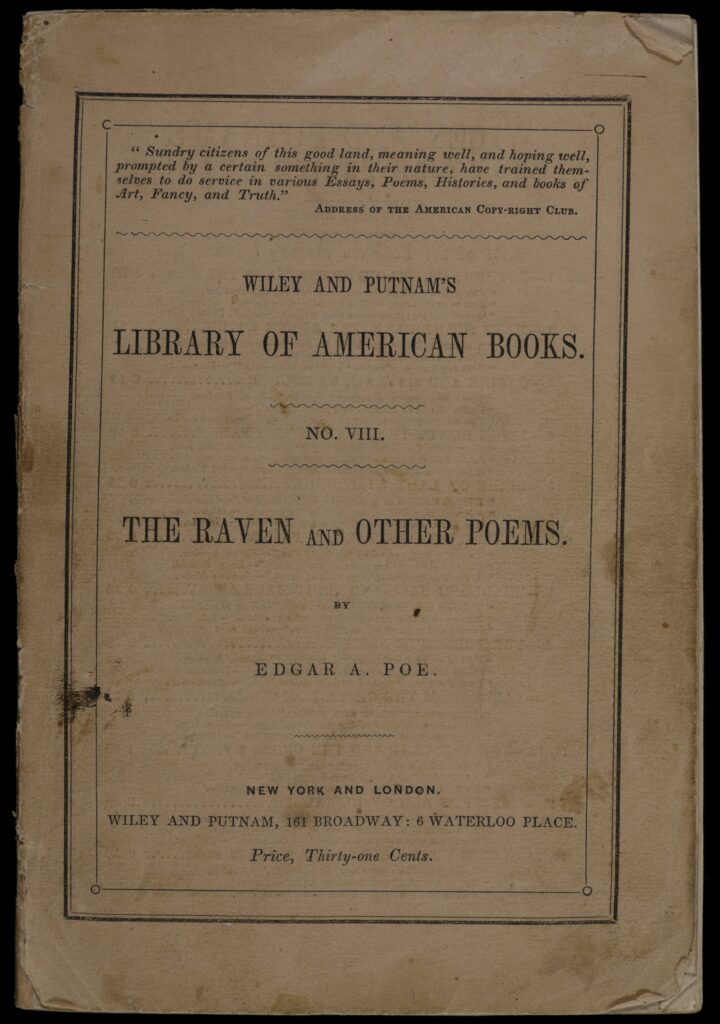


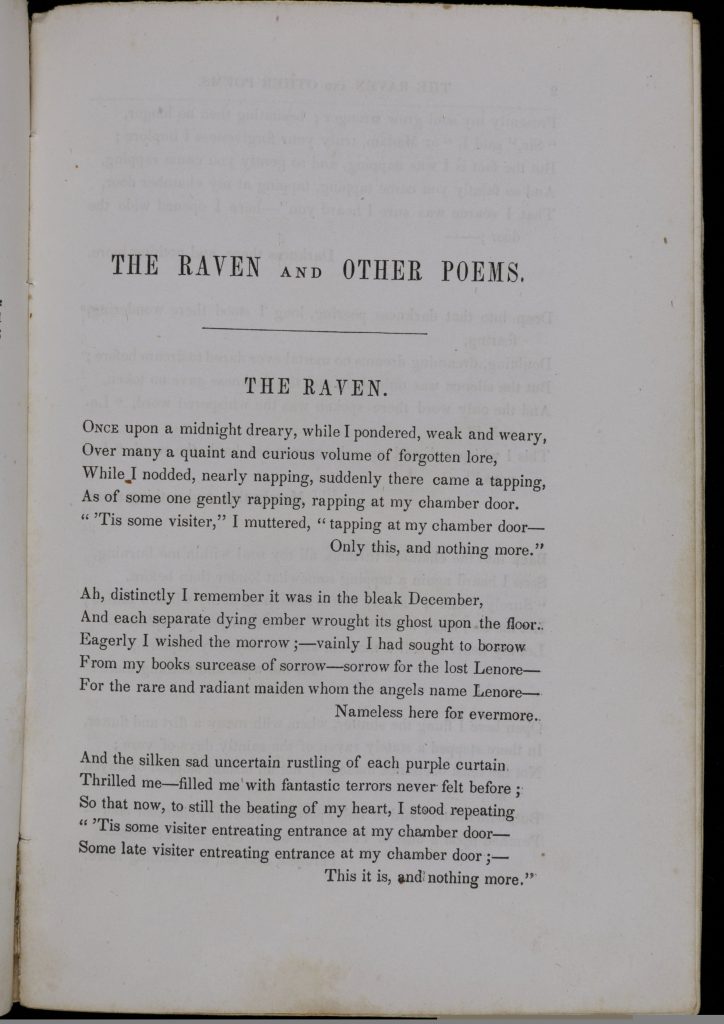
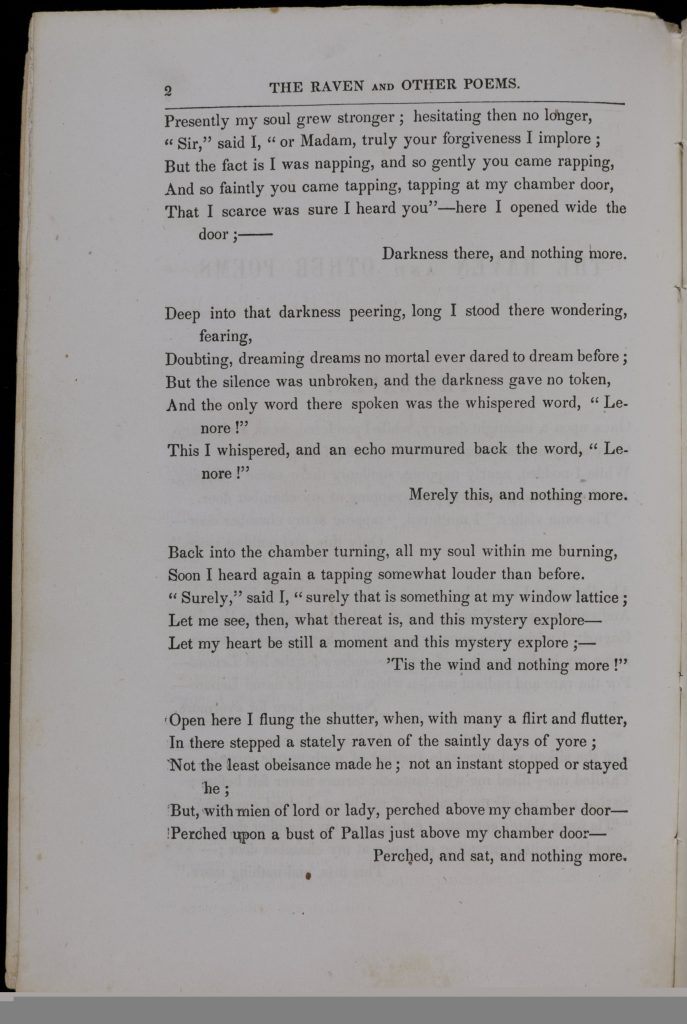
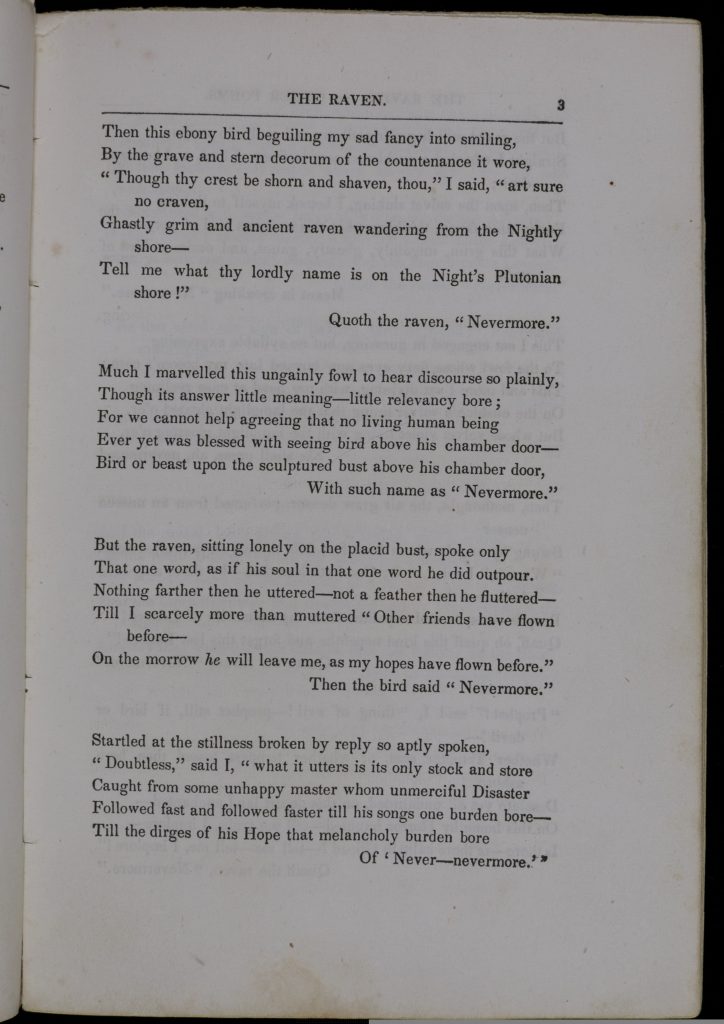
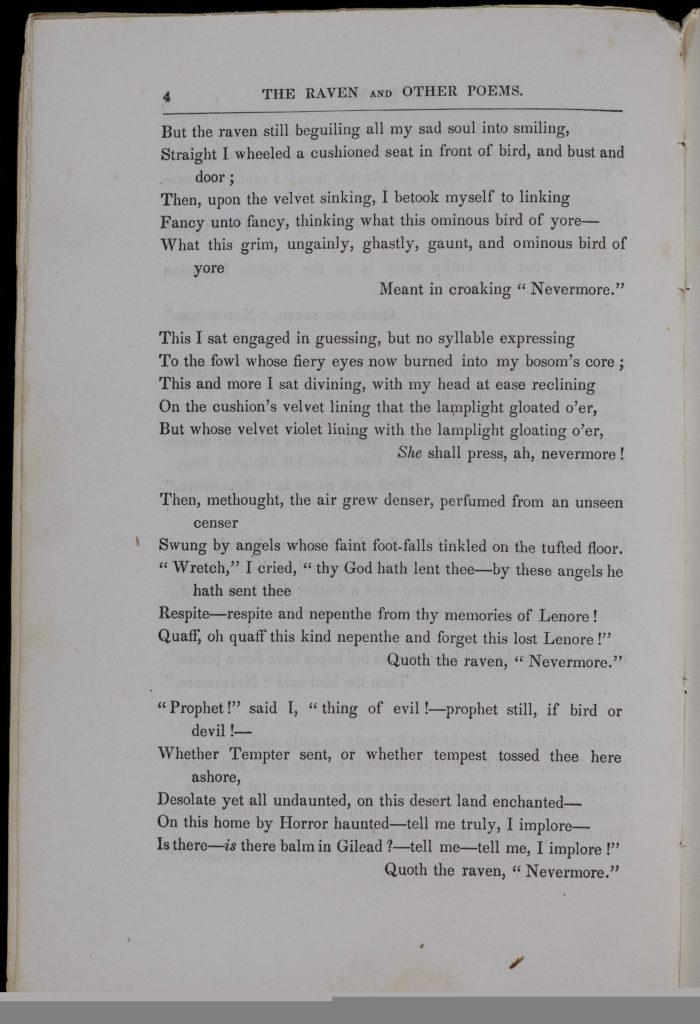


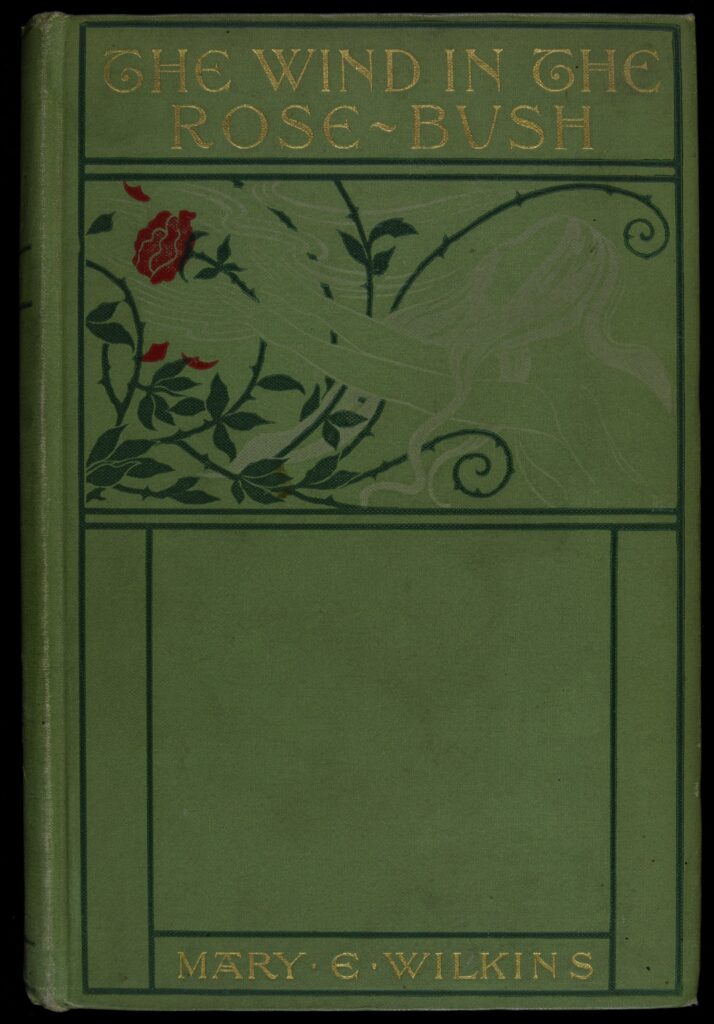
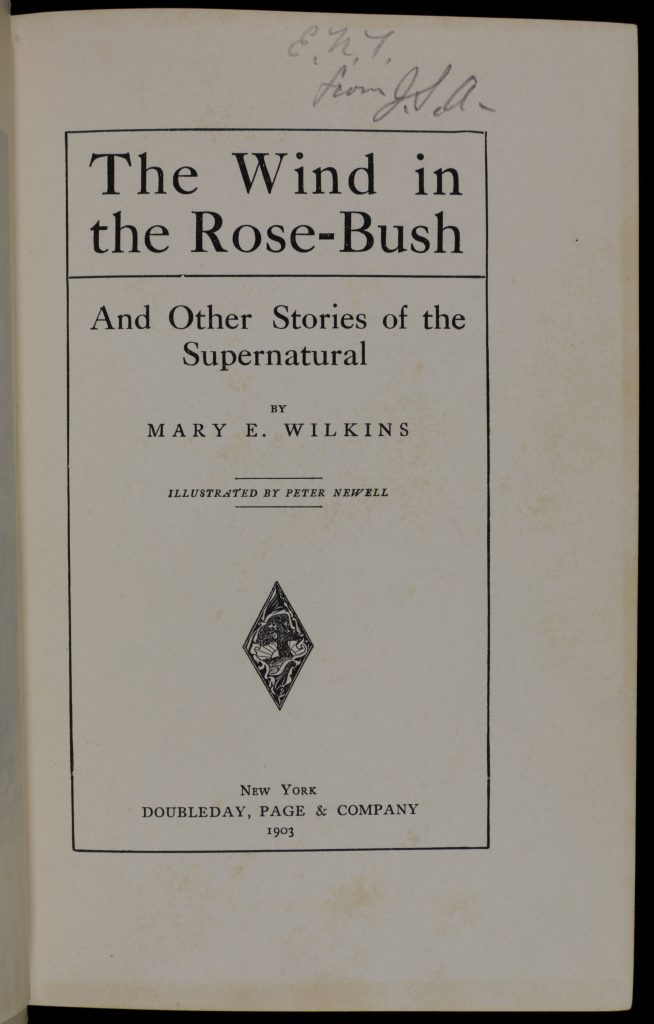

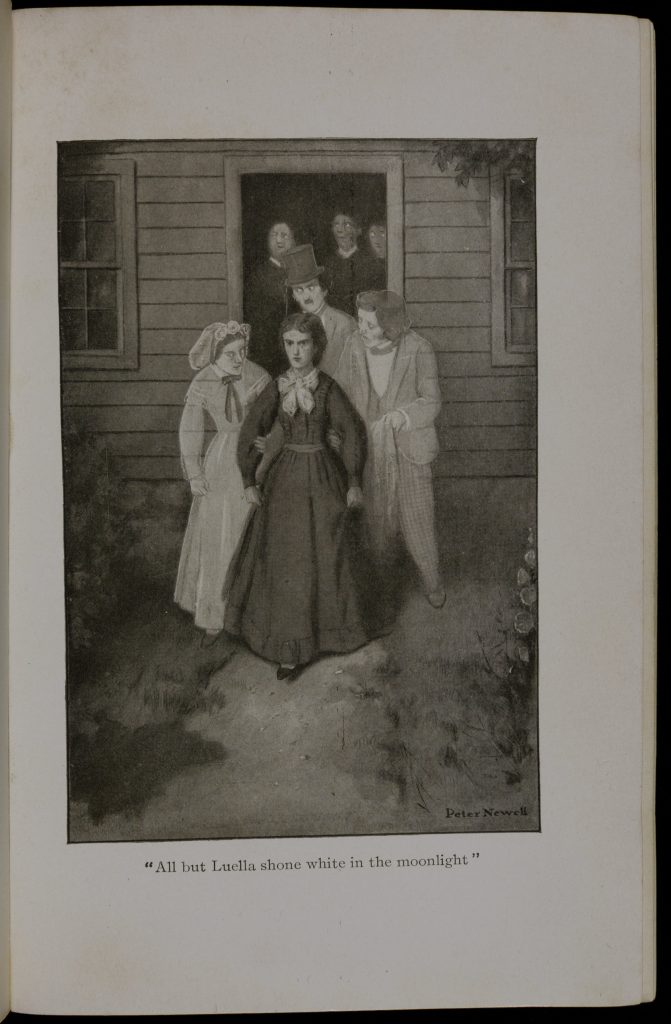
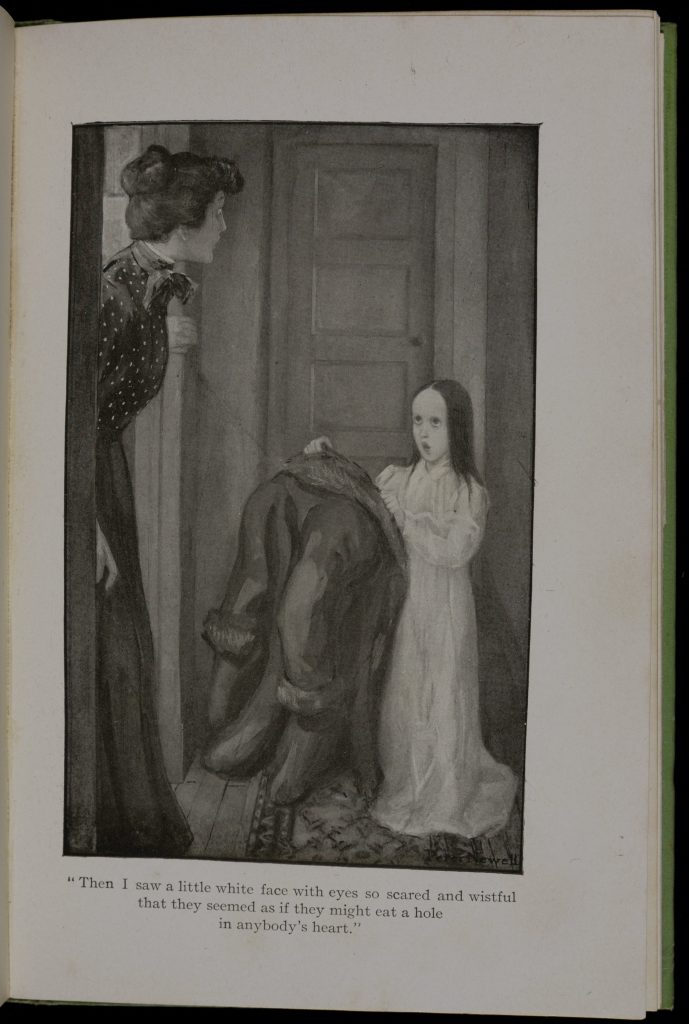
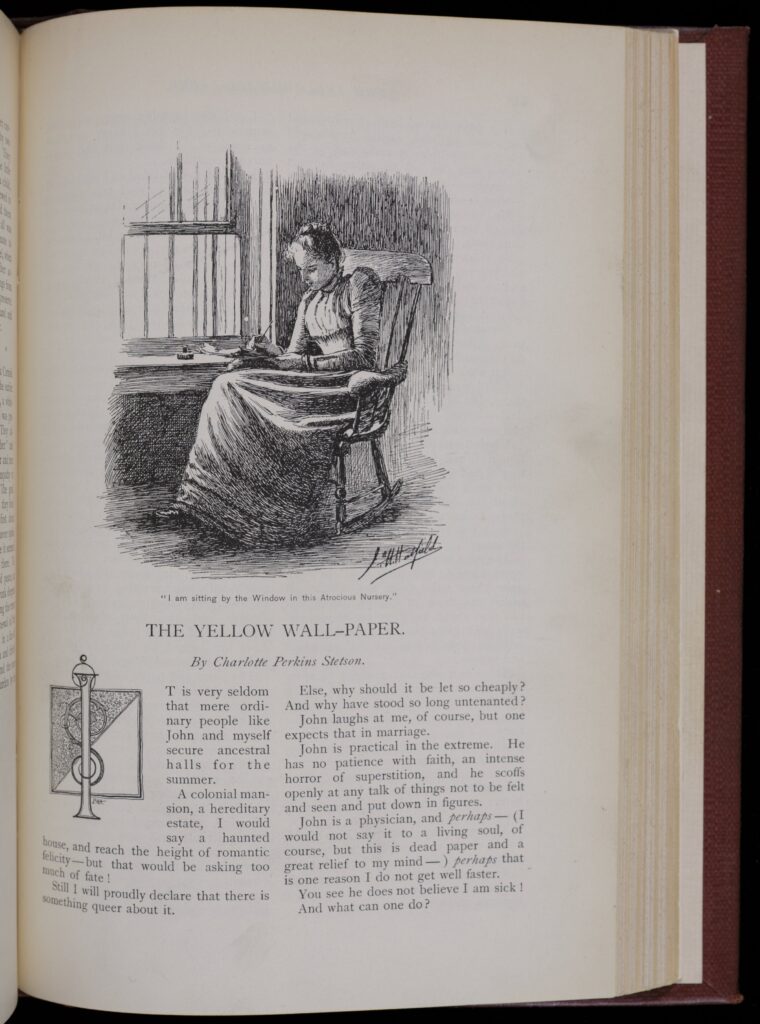
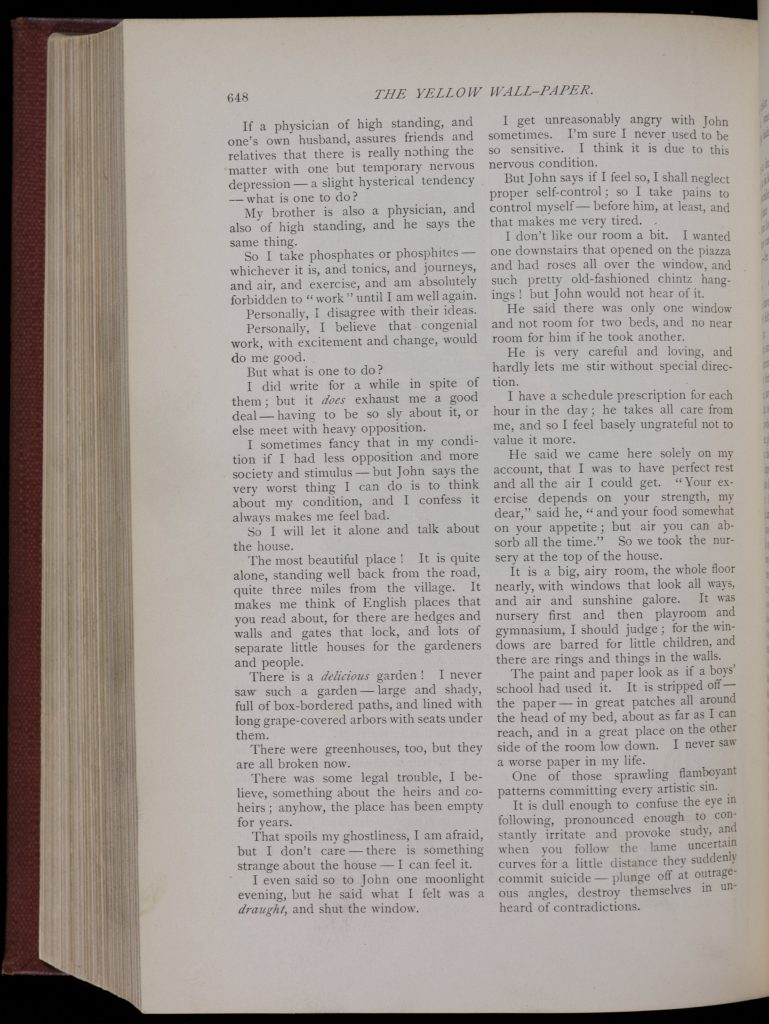
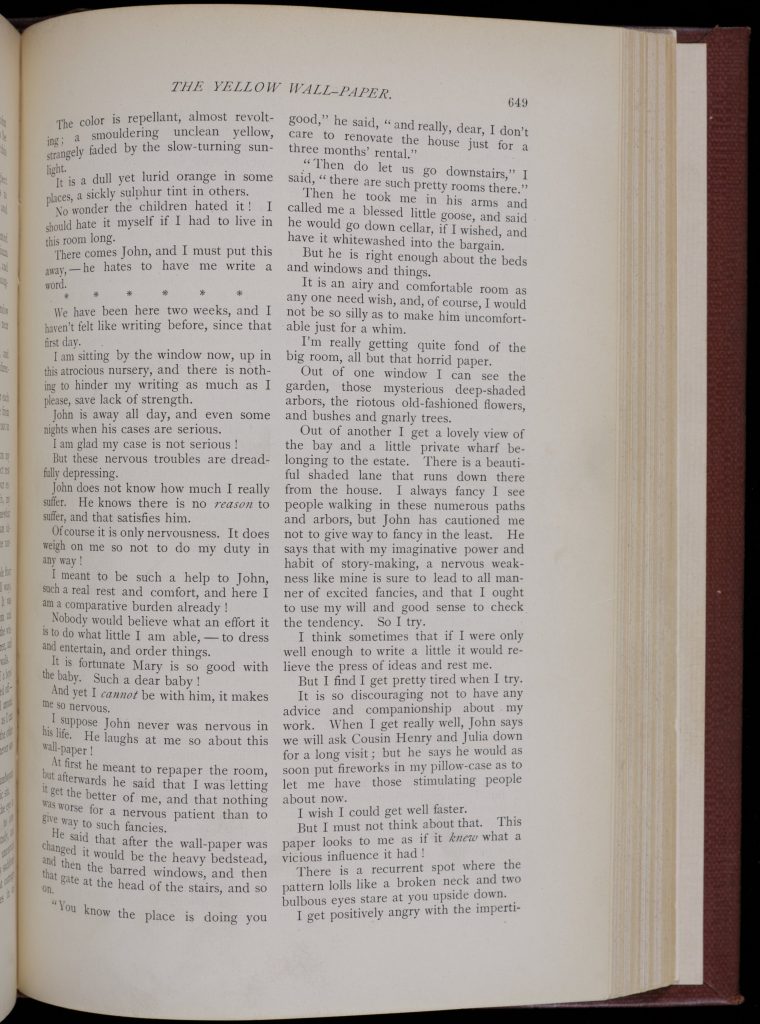
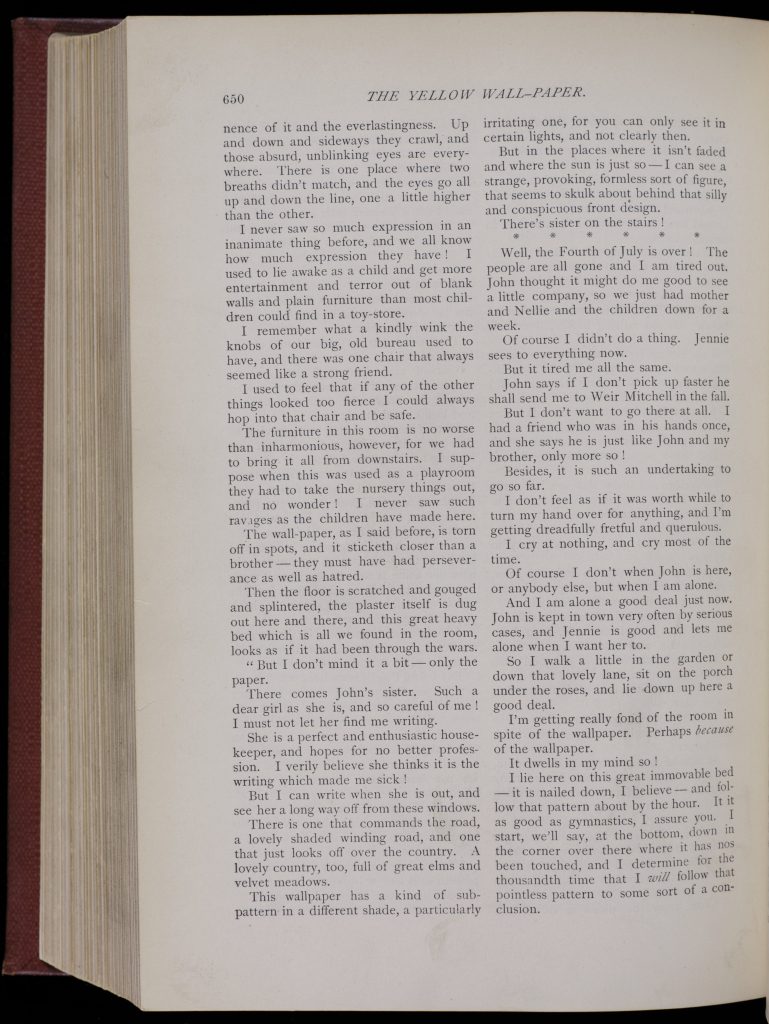
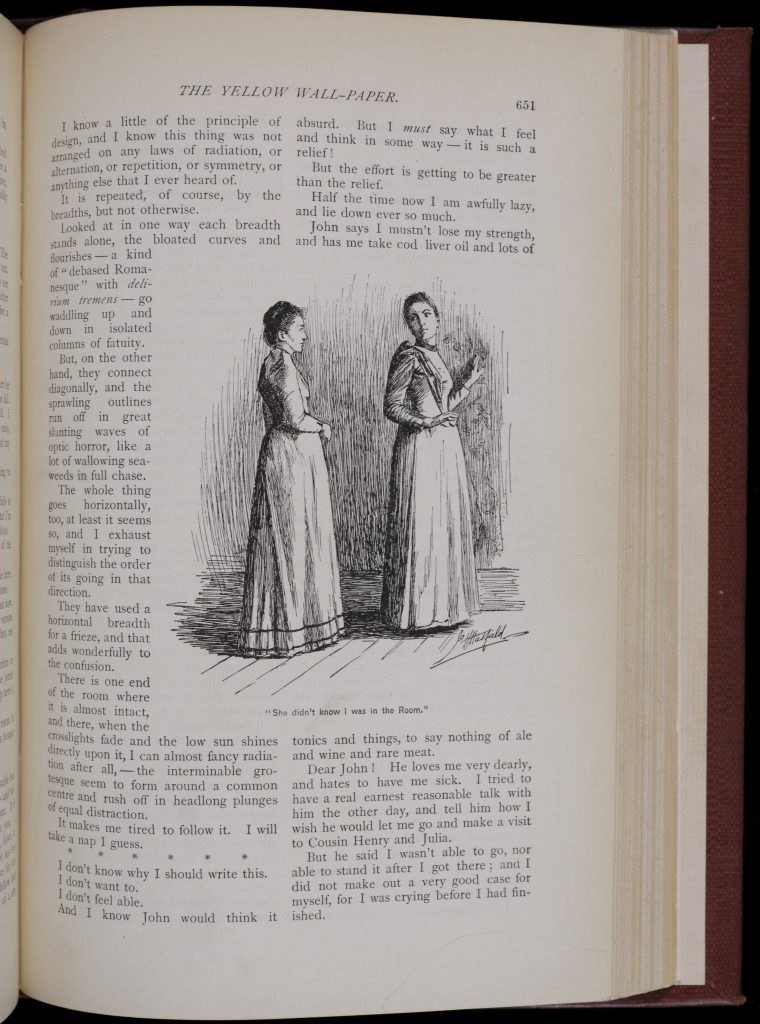
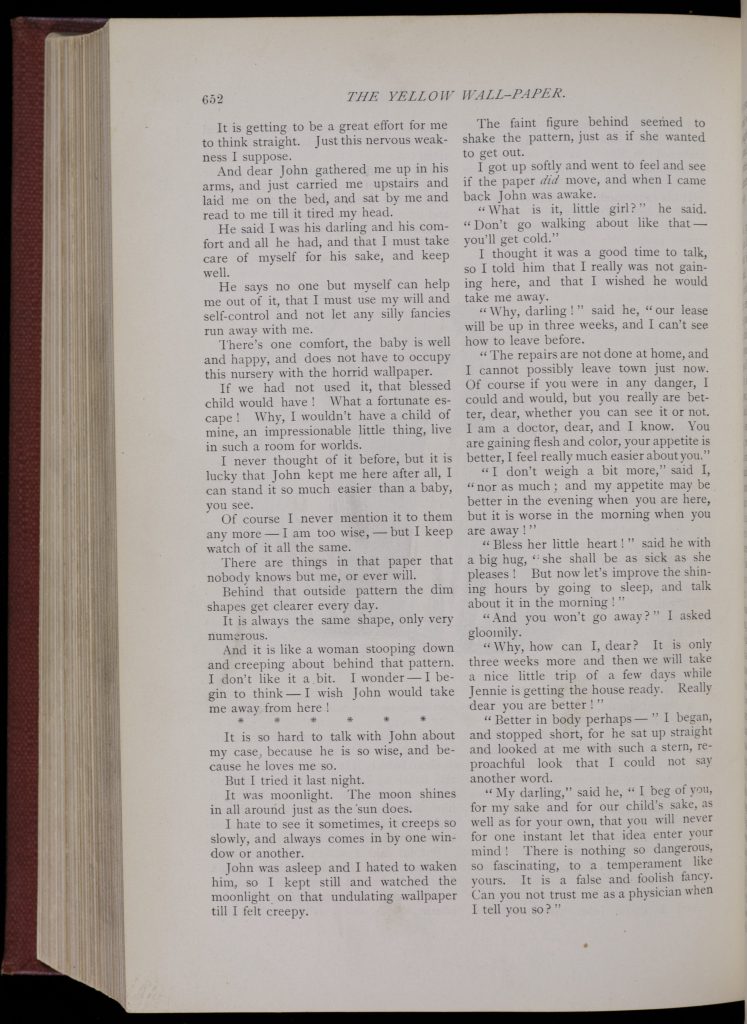
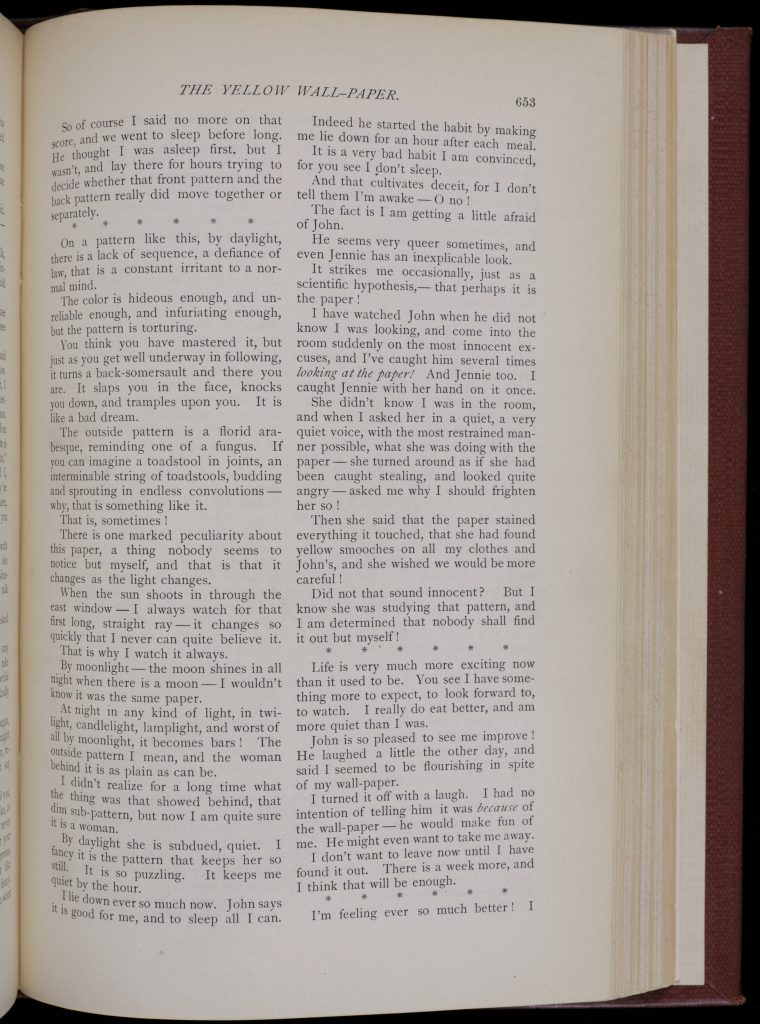

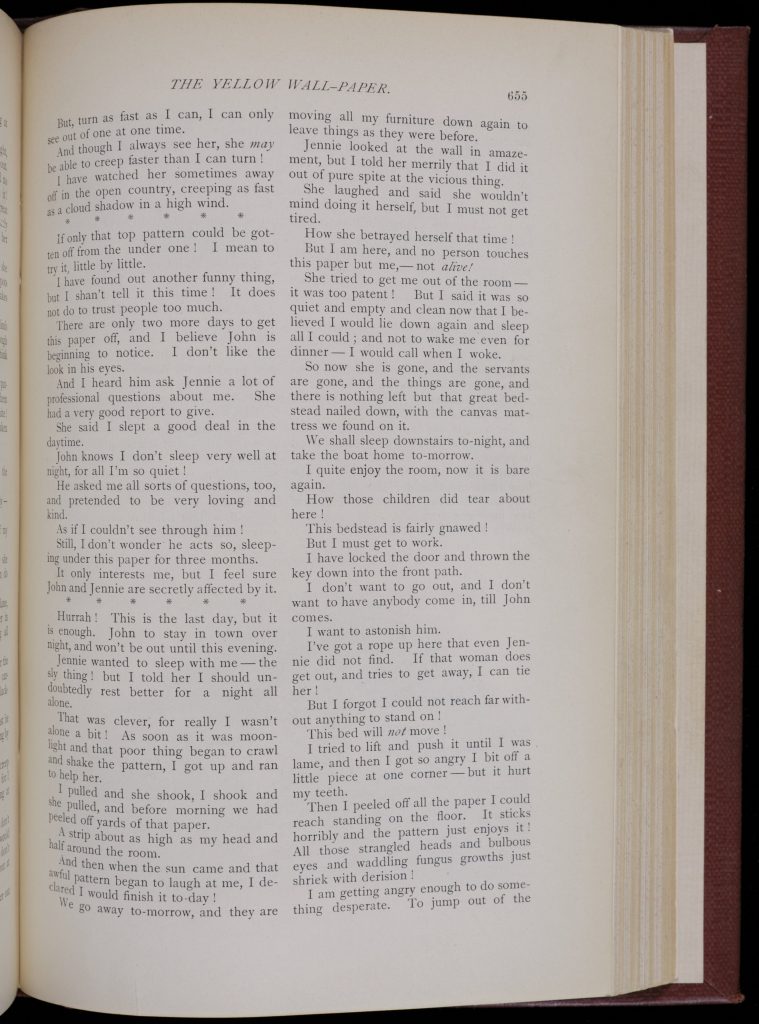
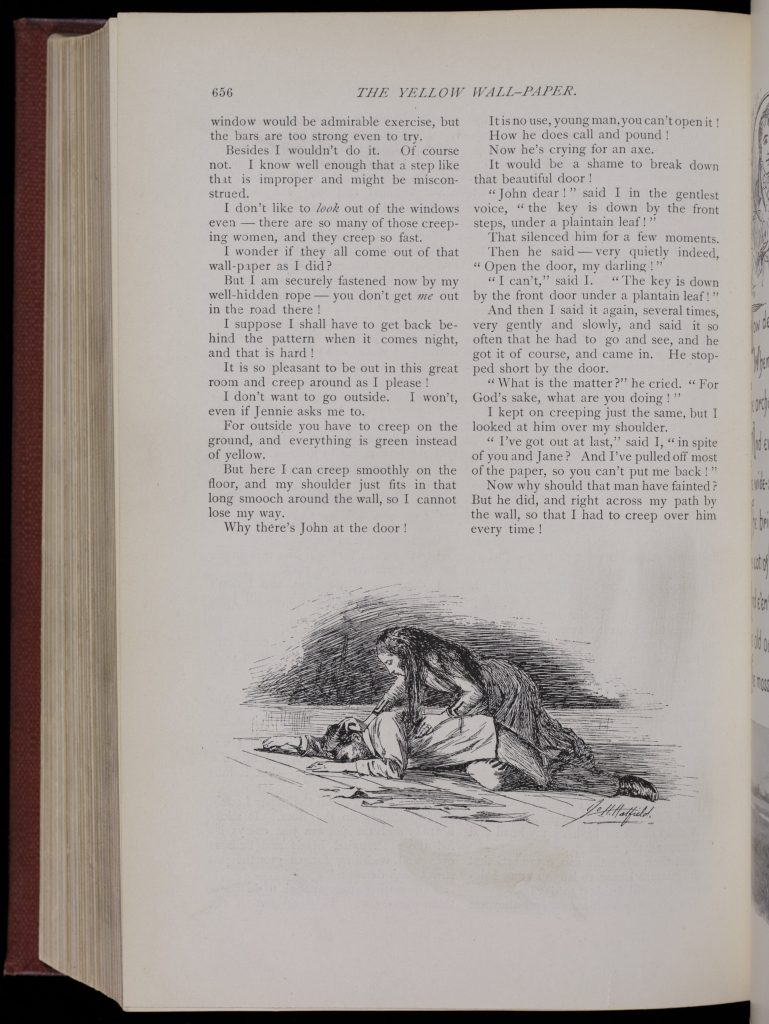
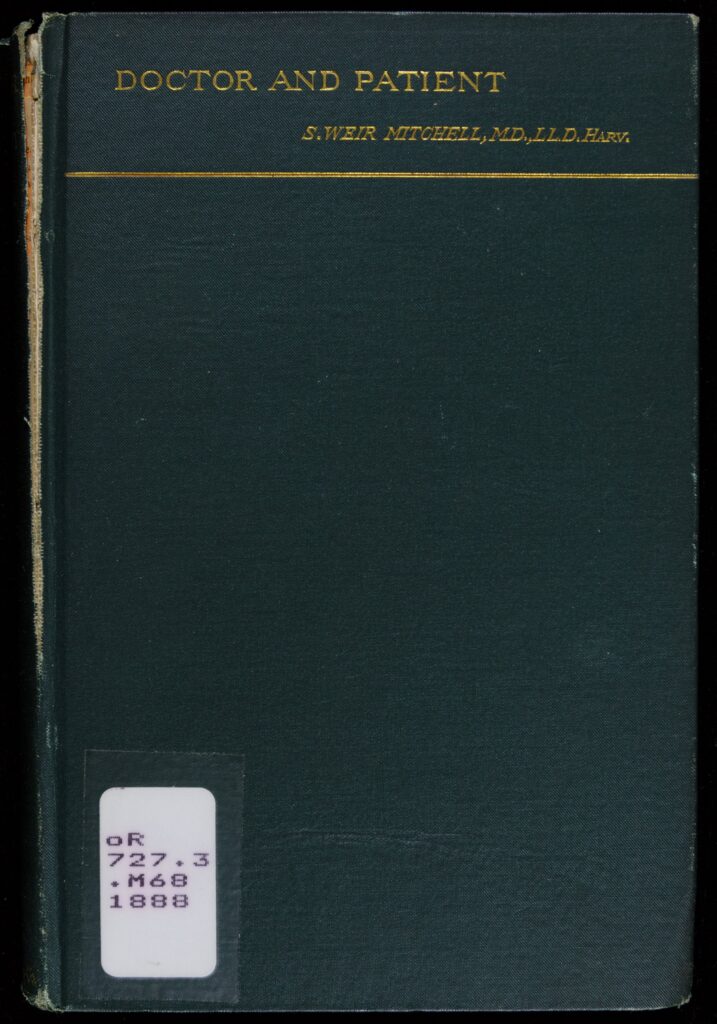
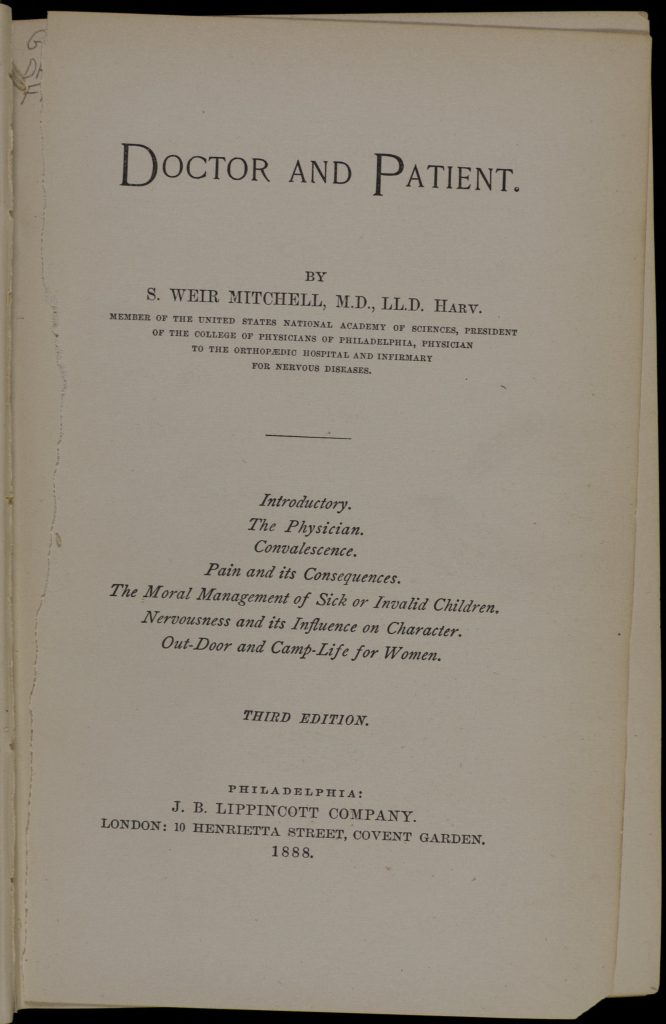
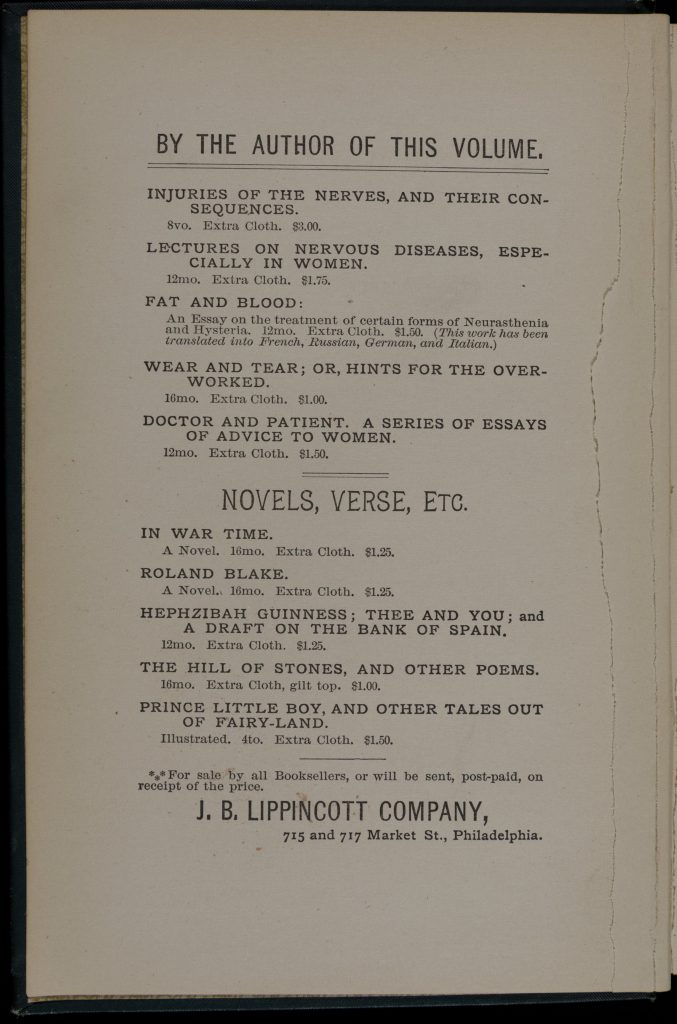
Further Reading
Baker, Brian. “Gothic Masculinities.” The Routledge Companion to Gothic. Ed. Catherine Spooner and Emma McEvoy. New York: Routledge, 2007. 164-173.
Bondhus, Charlie. “Sublime Patriarchs and the Problems of the New Middle Class in Ann Radcliffe’s The Mysteries of Udolpho and The Italian.” Gothic Studies 12.1 (2010): 13-32.
Brabon, Benjamin A., & Stéphanie Genz. Postfeminist Gothic: Critical Interventions in Contemporary Culture. New York: Palgrave Macmillan, 2007.
“The Castle of Otranto: The Creepy Tale that Launched Gothic Fiction.” BBC News Magazine. Accessed 8 Aug 2018.
Clery, E. J. Women’s Gothic: From Clara Reeve to Mary Shelley. Tavistock: Northcote House, 2000.
Crow, Charles L. American Gothic. Cardiff, Wales: University of Wales Press, 2009.
Cuddon, J. A. Dictionary of Literary Terms. London: Deutsch, 1977.
Edwards, Justin D. Gothic Passages: Racial Ambiguity and the American Gothic. Iowa City: University of Iowa Press, 2003.
Elbert, Monika & Bridget M. Marshall, eds. Transnational Gothic: Literary and Social Exchanges in the Long Nineteenth Century. Burlington, VT: Ashgate, 2013.
Ellis, Kate Ferguson. The Contested Castle: Gothic Novels and the Subversion of Domestic Ideology. Urbana: University of Illinois Press, 1989.
Fiedler, Leslie. Love and Death in the American Novel. New York: Criterion Books, 1960.
Fleenor, Juliann E. “Introduction: The Female Gothic.” The Female Gothic. Ed. Juliann E. Fleenor. Montreal: Eden, 1983. 3-28.
Garrett, Peter. Gothic Reflections: Narrative Force in Nineteenth-Century Fiction. Ithaca, NY: Cornell University Press, 2003.
Gilbert, Sandra and Susan Gubar. The Madwoman in the Attic: The Woman Writer and the Nineteenth-Century Literary Imagination. New Haven: Yale University Press, 1979.
Goddu, Teresa A. Gothic America: Narrative, History, and Nation. New York: Columbia University Press, 1997.
Gross, Louis S. Redefining the American Gothic: from Wieland to Day of the Dead. Ann Arbor, MI: U of Michigan P, 1989.
Krause, Sydney J., ed. Three Gothic Novels: Wieland, Arthur Mervyn, Edgar Huntly. Library of America, 1998.
“Literary Terms and Definitions.” Saylor Academy Online. Accessed 10 June 2018.
Milbank, Alison. Daughters of the House: Modes of the Gothic in Victorian Fiction. New York: St. Martin’s Press, 1992.
Oates, Joyce Carol. “The King of Weird.” The New York Review of Books. Accessed 17 Aug. 2018.
Poe, Edgar Allan. “The Fall of the House of Usher.” Library of America, 1984. 317-336.
Ringe, Donald A. American Gothic: Imagination and reason in Nineteenth-Century Fiction. Lexington, KY: UP of Kentucky, 1982.
Roberts, Siân Silyn. Gothic Subjects: The Transformation of Individualism in American Fiction, 1790-1861. Philadelphia: University of Pennsylvania Press, 2014.
Ronald, Ann. “Terror-Gothic: Nightmare and Dream in Ann Radcliffe and Charlotte Brontë.” The Female Gothic. Ed. Juliann E. Fleenor. Montreal: Eden, 1983. 176-186.
Ryan, Alan. Haunting Women. Avon Books, 1988.
“The Romantic Period: Gothic: Overview.” The Norton Anthology of English Literature: Norton Topics Online. Accessed 10 June 2018.
Sedgwick, Eve Kosofsky. “The Character in the Veil: Imagery of the Surface in the Gothic Novel.” PMLA 96.2 (1981): 255-270.
Wallace, Diana & Andrew Smith. Introduction. The Female Gothic: New Directions. New York: Palgrave Macmillan, 2009. 1-12.
Wester, Maisha L. African American Gothic: Screams from Shadowed Places. New York, NY: Palgrave Macmillan, 2012.
Whiting, Patricia. “Literal and Literary Representations of the Family in The Mysteries of Udolpho.” Eighteenth-Century Fiction 8.4 (1996): 485-501.
Whitney, Sarah E. Splattered Ink: Postfeminist Gothic Fiction and Gendered Violence. Urbana: University of Illinois Press, 2016.
Wright, Angela. Gothic Fiction. New York: Palgrave Macmillan, 2007.



